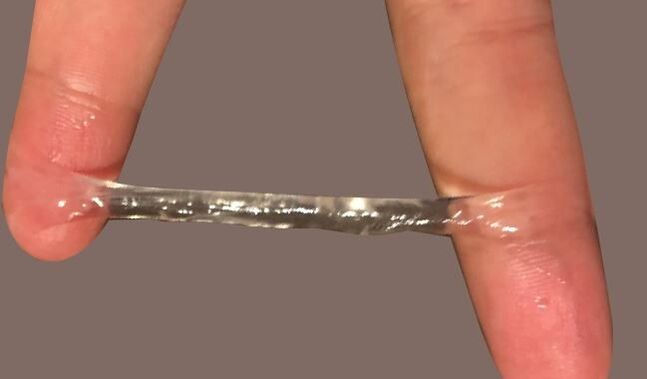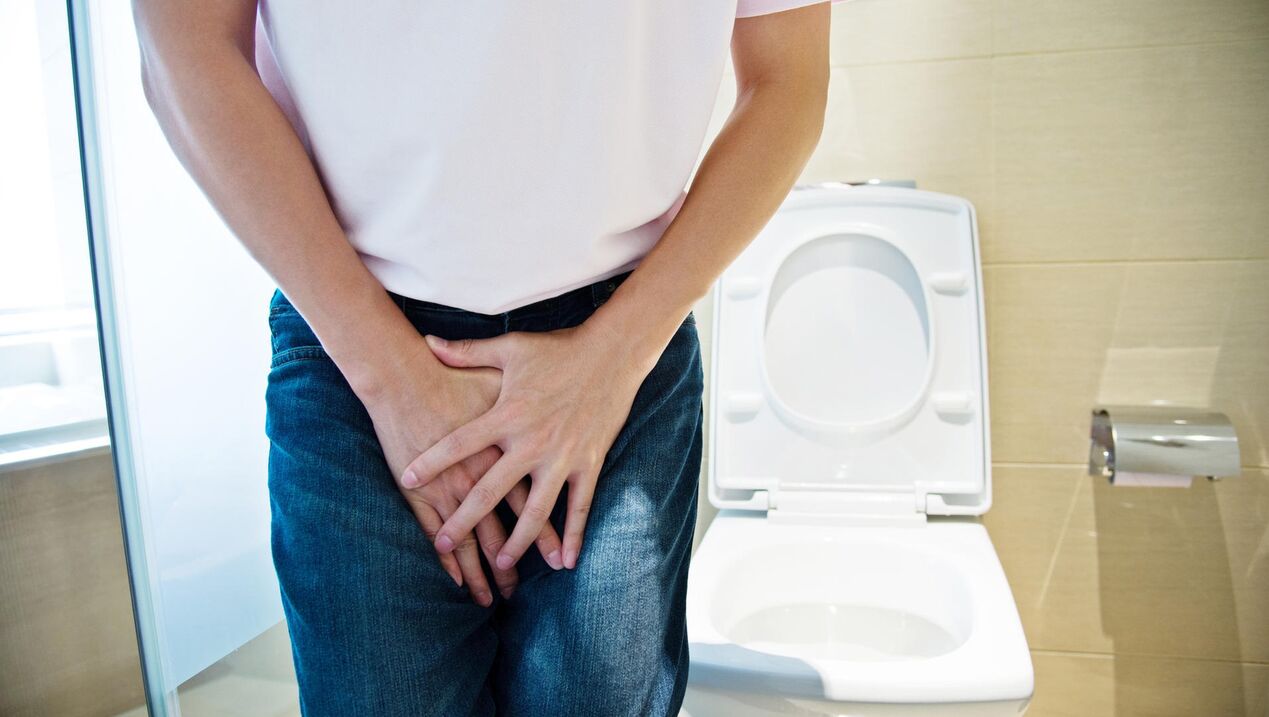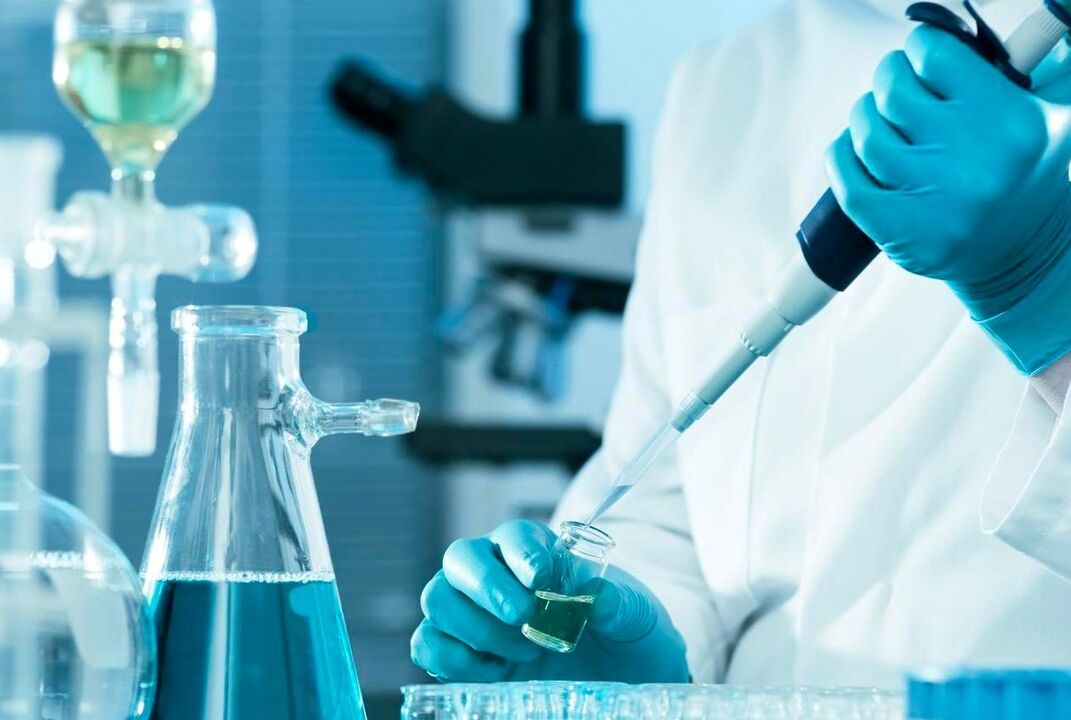When the penis is in a state of arousal, a small amount of fluid is released from the urethra. This is a normal phenomenon that is inherent in almost all healthy men. With the development of diseases, the consistency and volume of the lubricant changes. There is an unpleasant odor, a feeling of pain or burning when urinating or erection. Such a clinical picture requires special attention from a person as there is a threat to health.
Excretion during arousal in men is called pre-ejaculation. It protrudes from the opening of the urethra the moment the guy is aroused. The presem is secreted by the bulbourethral glands and Littres glands, which are located throughout the canal, from the outer opening to the bladder neck.
Excitations during arousal in men perform the following functions:
- provide free passage of semen through the urethra;
- destroy bacteria;
- moisturizes and suppresses the acidic environment of the urethra.
The presemen is also able to act as a lubricant during intercourse, but in most cases the amount allocated will not be enough for this. Pre-ejaculate is one of the components of semen. It enters the semen during ejaculation, mixes with the seed, allowing you to protect sperm from the acidic environment of the woman's vagina.

In the picture above, healthy discharge in men when they are aroused.

The volume of pre-ejaculate depends directly on the degree of excitation of the guy. Maximum concentration is achieved with strong sexual desire. The normal amount of liquid is 5 ml.
Some representatives of the stronger sex are physiologically unable to excrete lubricant. The absence of the presem during an erection reduces the ability to conceive.
A healthy pre-ejaculate has the following properties:
- lack of odor;
- transparency;
- viscosity;
- lack of lumps or inclusions;
- does not cause discomfort or pain.
The presede performs cleansing functions so that the consistency can change. A man may observe turbidity of the lubricant during repeated sexual contact, lack of hygiene or before ejaculation. She will return to normal in 1-2 days. Otherwise, the development of a pathogenic process should be suspected.

Pathological mucus secretions in men differ from healthy in color, odor and consistency. They are almost always accompanied by discomfort.
Symptoms indicating a lubricant deviation from the norm:
- the appearance of fluid from the urethra during the day;
- the presence of an unpleasant odor;
- pain when urinating;
- the formation of excessive amounts of mucus;
- arbitrary release of lubricant without sexual arousal;
- the presence of third-party inclusions;
- change in consistency to too thick or liquid.
These signs are characteristic of pathological processes indicating the development of diseases.
Unhealthy discharge in men is divided into types:
| Type | Description |
|---|---|
| Spermatorrhoea | Voluntary sperm flow without reaching orgasm. The reason for the process is a reduced tone of the muscles in the vas deferens. Pathology develops due to chronic inflammation |
| Hematatorrhea | Isolation of lubricant with blood impurities. Appears with damage to the lining of the urethra |
| Leukocyte uretrorrhea | Exudative phase of the inflammatory process due to thermal, mechanical, chemical or viral damage to the lining of the urethra |
| Mukopurulent | They consist of a small number of leukocytes, serous fluid and glandular secretions. This mucus is characterized by active formation at night. A man notices a discharge of pus in the morning and yellow spots can be found on his underwear. Mucopurulent discharge occurs when the urethra is affected by bacteria: Trichomonas, ureamycoplasma, chlamydia |
| Purulent | They include a large number of leukocytes, urethral epithelium, mucus and serous fluid. They have a thick consistency and an unpleasant odor. They appear in the form of droplets that have a yellow or greenish tint. Indicate the development of gonococcal urethritis, which is formed on the background of chlamydia and gonorrhea |
The amount of mucus secreted can be both abundant and small. It can be quite difficult to feel bad lubrication. To do this, press the urethra so that the fluid comes out of the hole. It dries quickly and forms a film on the glans penis membrane. The viscous consistency leads to adhesion of the urethral fungi.
The appearance of a secret secreted from the human body informs both about the norm and about deviations. For example, with a runny nose or otitis media, the appearance of fluid clearly indicates the disease. The human reproductive system is much more complex. Discharge in men during arousal may report a normal state of health or, conversely, signal the development of a disease.
Should men have discharge during sexual arousal?
In men, the presence of mucus in the urethra is in some cases a natural and necessary process. When an erection occurs, transparent discharge appears in the amount of a few drops. They are called pre-seminal fluid, such physiological phenomena are completely normal.

The amount of mucus secretion depends entirely on the characteristics of the male body and must meet certain characteristics in order to be considered the norm. In particular, there should be no excessive density, color, specific odors.
The appearance of a secretion occurs in the following cases leading to an erection:
- Masturbation;
- Sexual caresses of a partner;
- Thoughts of intimacy.
The frequency of occurrence of this phenomenon also depends on the characteristics of the reproductive system. Some men experience discharge at every arousal, others observe them extremely rarely.
From the point of view of medical specialists, the presence of exudate during sexual arousal promotes conception - it plays the role of an additional leader of sperm in the process of reaching the egg and reduces the acidity of the female vagina, which destroys sperm. Consequently, genital secretions are actively involved in the fertilization process and are considered as an essential mechanism in the male reproductive system.
Why is this happening?
Doctors have not fully determined the cause of fluid leakage from the penis, but it has been proven that the release of lubricant in men during arousal helps to facilitate the exit of the head of the reproductive organ from the folds without injury or damage. It is necessary to carefully observe intimate hygiene, the secreted liquid is an excellent breeding ground for pathogenic bacteria.
It is important to note that prolonged abstinence induces much more abundant discharge, and the composition of the secret becomes thicker and obscure. It is necessary to ensure that there is no change in color, streaks of blood and an unpleasant odor do not appear. Some doctors believe that the presence of fluid occurs because the body is preparing for intimacy with a woman.
Pathological discharge can occur for various reasons:
- Improper nutrition, especially the use of sour, spicy, pickles;
- Inflammatory processes induced by pathogenic bacteria;
- venereal diseases;
- Concomitant postoperative complications or injuries;
- Oncological pathologies.
Variants of secretions
Several types of discharge are normal, provided they are not accompanied by additional signs.

However, if a specific odor, itching, fever, soreness in the groin or penis becomes a contributing factor, then this is already a cause for concern and to contact a urologist.
Types of emissions related to the norm
Completely normal and natural are 3 types of produced and liquid secrets.
- Libidinous urthrorhea. A secret that has the function of lubrication. It looks like a liquid with a transparent consistency, has no odor. Appears in small amounts, does not cause inconvenience. It contains a small amount of spermatozoa, but during unprotected sex, a partner's pregnancy can occur;
- Spegma. Whitish secretion, sometimes has a yellowish tint, often smells unpleasant. The secretion of fluid is provided by glands located under the foreskin. Her appearance does not indicate pathology, but indicates that the man neglects the rules of personal hygiene;
- Sperm. White liquid with mucus consistency. Exhaustion occurs from the urethra during orgasm. Contains a high percentage of semen and secretions.
Secretions containing mucus
Often indicates the presence of sexually transmitted diseases. In cases where the secretion has an increased viscosity but remains transparent, the following diseases are likely to be present:
Disorders are also confirmed by the presence of a high level of leukocytes in blood samples.
Mucous sections of milky light with purulent streaks accompany diseases such as:
In the presence of these pathologies, the fluid can also be released in a calm state, after which it adheres to the head of the penis and dries up.
Purulent discharge
Signs of gonorrhea. The resulting liquid is yellow with a greenish tint and an unpleasant odor. The consistency is thick and sticky. By secret analysis, a significant level of leukocytes is detected.
Discharge during inflammation
Inflammatory diseases that change the composition of secretions are caused by:
- Staphylococcus;
- coli;
- Candida fungus;
- Streptococci.
When non-gonococcal urethritis occurs - inflammation of the urethra, the secreted fluid is characterized by:
- Blur and tack;
- The presence of mucus;
- Purulent content.
Accompanied by soreness, discomfort, itching.
The disease of the foreskin, balanoposthitis, is characterized by abundant discharge containing very purulent content. There is redness, swelling, severe pain.
Prostatitis is characterized by secretion of mucus mixed with pus. Additional symptoms - pain, decreased erectile function, frequent urge to empty the bladder.
To determine candidiasis, it is enough to study the picture which shows the secret characteristic of it. It has the consistency of cottage cheese, this form of mycosis is accompanied by redness of the glans penis, unbearable itching.
Discharge with blood
The secret that contains the blood requires the most careful attention. Similar characters indicate:
- Infectious diseases, especially chronic infectious urethritis;
- Damage to the urethra during medical procedures;
- Removal of sand and stones from the kidneys, blood is more noticeable during urination;
- Malignant formations in prostate, ovaries, genitals. In this case, the discharge contains brown or dark blood, often in the form of blood clots.
Norm or deviation?
An unambiguous sign of pathology is the presence of mucus, pus, discoloration, a fishy or sour odor, the appearance of stickiness or haze.
- Average density;
- Transparency;
- Lack of odor.
With minor changes in color and texture, it is important to analyze:
- Own sex life, the presence or absence of random and unprotected relationships;
- Factors contributing to the decline in the body's protective functions;
- Possible changes in the usual menu;
- Presence of comorbidities.
Am I going to the doctor?
An immediate visit to the doctor requires a secret that is uncharacteristic of a man. Any changes in the structure and color of the fluid require examination to identify factors leading to such violations.

Diagnostic measures include:
- spermogram;
- A smear from the urethra;
- Ultrasound examination of the organs of the genitourinary system;
- Urine sampling for general analysis;
- Clinical blood test.
Based on the diagnostic results, a treatment regimen is prescribed for the underlying disease that caused the appearance of pathological exudate. Ignoring such signs leads to a deterioration of well-being and the transition of the disease to a chronic form that is difficult to treat. A timely visit to the urologist allows you to quickly cope with the disease and maintain health for a long period of time.
Pre-ejaculate (pre-semen or Cooper's fluid) is a clear, colorless, viscous pre-seminal fluid that is released from the urethra of a man's penis to the outside when he enters a state of sexual arousal. Pre-ejaculation is inevitable during human intercourse. This secret is also secreted by a man during masturbation, in preparation for intercourse (eg pets), or at an early stage of mating, some time before the man reaches full orgasm and ejaculates.
Origin of pre-cum
The presemen is formed mainly by the bulbourethral glands (Cooper's glands) as well as by Littre's glands.
The glands of the Littre are an additional site for the formation of the presemen. These are grape-shaped tubular-alveolar glands in the urethra, located along its entire length, from the outer opening to the bladder neck, in the submucosal, fibromuscular and connective tissue layers. They excrete and excrete a mucus fluid, the amount of which increases with sexual arousal. Along with the secretion of the Cooper glands, the secretion of Littre's glands also serves to moisten the urethra, in order to maintain an alkaline reaction which is favorable for sperm during their passage through the urethra.
The amount of excreted pre-ejaculate
The amount of pre-seminal fluid secreted by a man varies greatly between individuals. Some men do not excrete the presem, while in others its volume reaches 5 ml. The preseed contains a number of chemicals present in the seed, such as acid phosphatase. And some seed markers, such as gamma-glutamyltransferase, are completely absent in the presage.
Function performed by preseed
The acidic environment of the male urethra and female vagina is hostile to male semen. The presem neutralizes the residual acidity in the urethra caused by urine, creating a more favorable environment for the passage of the seed. Usually the vaginal environment is acidic; the introduction of the premen before ejaculation may alter the vaginal environment to promote seed survival. Precum can collect semen back into the urethra from previous ejaculations. The presemen does not act as a lubricant during intercourse, but facilitates the passage of semen through the canal during ejaculation and also participates in the coagulation of the seed.
Risks associated with Presemen isolation
Studies have shown the presence of HIV in the majority of presemen samples from HIV-infected men. Infection with immunodeficiency virus leads to the disease HIV infection, the last stage of which is known as AIDS. Many also express concern that sperm cannot be found in the pre-semen and therefore cannot cause pregnancy, by using this fact against the use of interrupted intercourse (removal of the penis) as a method of preventing pregnancy. No large studies have been performed to determine the content of semen in the premen, but a number of small studies have suggested that semen is present in the premen. It is also likely that the pre-semen released after a recent ejaculation will contain semen, as after an orgasm there is always some ejaculate in the ducts.
Increased preseminal formation
Some men are concerned about the amount of pre-semen they produce. A doctor described a patient who was confused by the fact that precisely seeped through his pants during kissing and other mild erotic stimulation. Several reports have shown satisfactory results when such men were treated with a 5-alpha reductase inhibitor. In such cases, a doctor recommended a differential diagnosis of prostorrhea, prostate discharge under urination or defecation.
religious attitude
For Sunni Muslims, the excretion of the presem during the corresponding sleep requires the performance of a purification ritual.
















































































